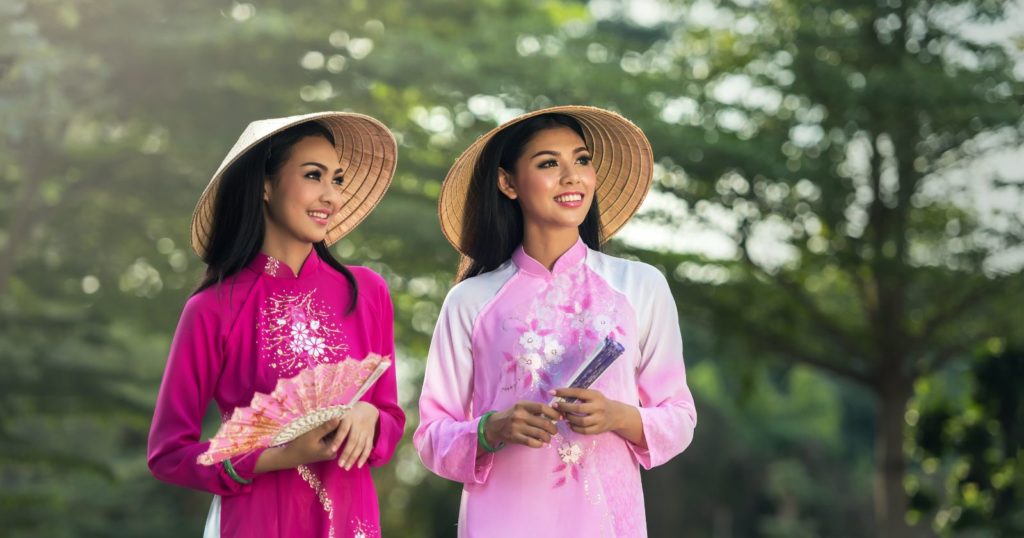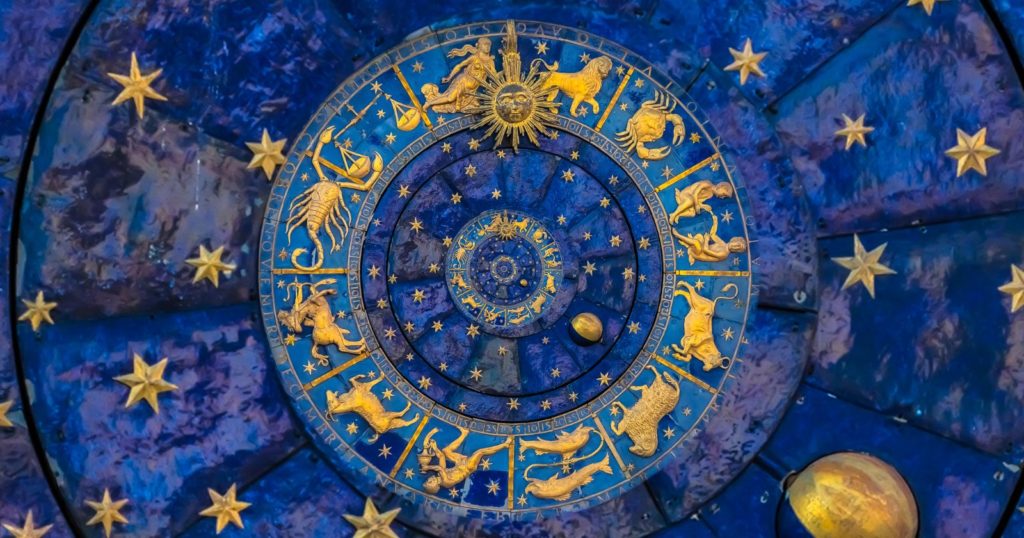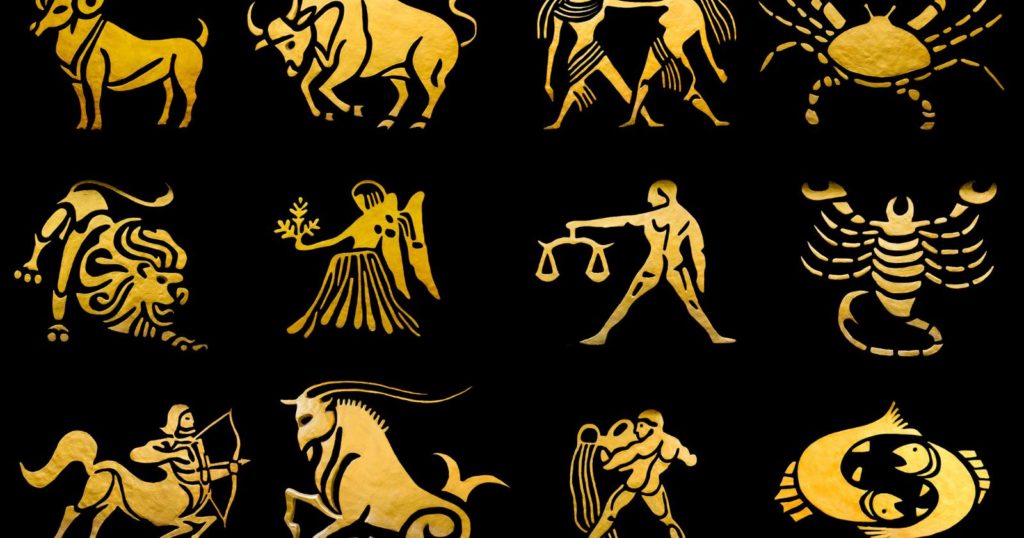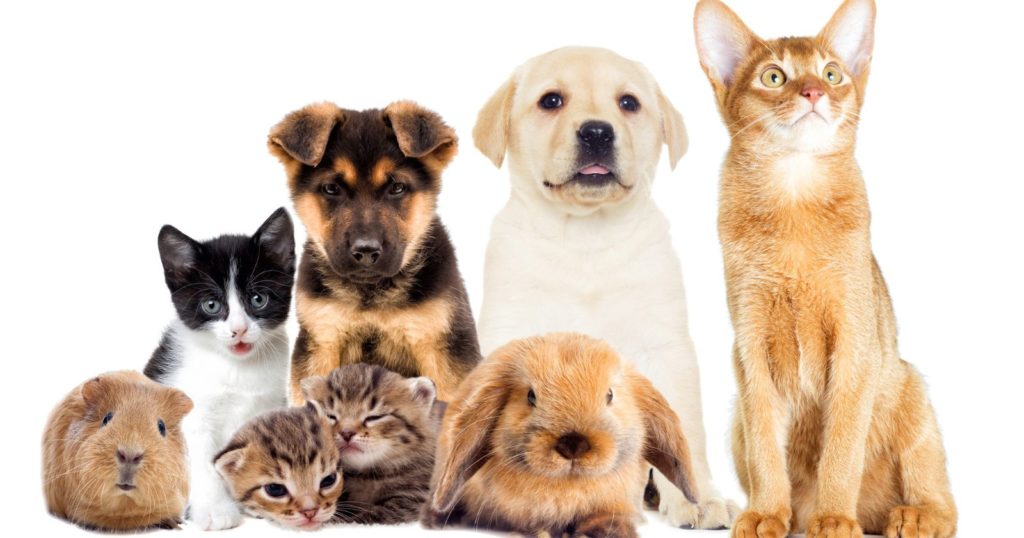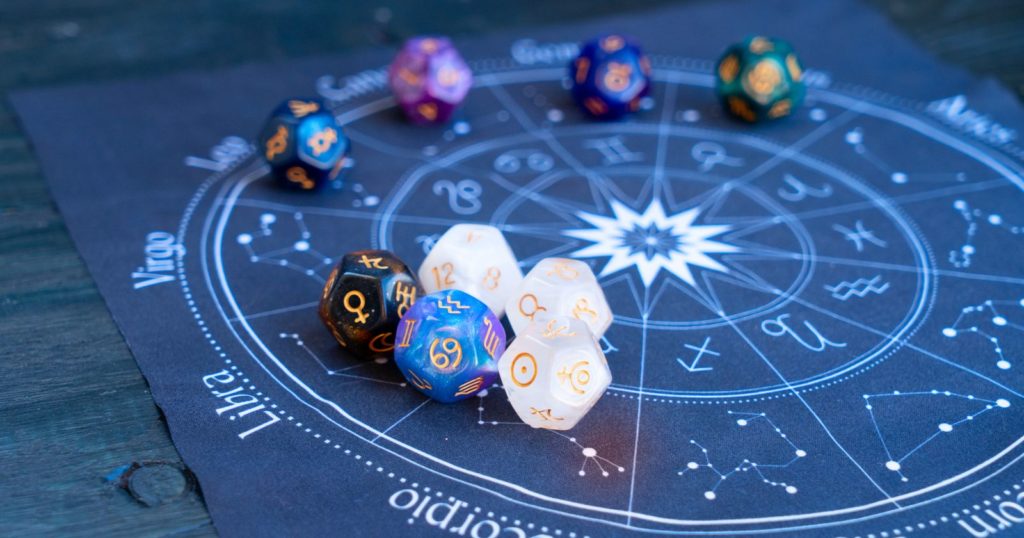From the antiquated murmurings of sages perched upon misty mountaintops to the modern discussions in bustling metropolitan coffee shops, the intricate and fascinating topic of Zodiac signs has been a perennial source of intrigue. Predominantly, we tend to find ourselves drawn towards the widely recognized Greek Zodiac, a system that categorizes individuals according to their birth month into one of twelve signs, each imbued with distinctive traits and characteristics. However, Asia, with its rich and ancient cultures, offers alternative, equally compelling interpretations of the Zodiac. Today, we delve deep into the comparison and contrast of two of these compelling Asian Zodiac systems: the Vietnamese and the Chinese Zodiac Signs.
Being a seasoned astrologer, fluent in the multilingual nuances of the cosmic dialect, I have spent countless years studying the mysteries of the universe and understanding the subtle differences and connections between various Zodiac systems. Through this comprehensive article, I aim to guide you through the labyrinth of the Vietnamese and Chinese Zodiac signs. I’ll paint a picture of their unique attributes, highlighting their distinct historical roots, symbolic representation, calendar system, and the intriguing myths and legends that surround them.
It is a fascinating exploration, much like a journey across the star-lit bridge connecting the cultures of Vietnam and China. Prepare to immerse yourself in an ethereal exploration that transcends time and space. So, tighten your seatbelts, as we are about to embark on this astronomical adventure!
Understanding the Vietnamese Zodiac
Vietnamese Zodiac, also known as “Tu Vi” or “Menh”, is a part of Vietnamese traditional culture which shares many similarities with the Chinese Zodiac. Born from the Vietnamese people’s observation of the universe and their surroundings, it has 12 animal signs representing a lunar year cycle. The animals include the Rat, Ox, Tiger, Cat, Dragon, Snake, Horse, Goat, Monkey, Rooster, Dog, and Pig. Noticeably, the Cat replaces the Rabbit, unlike the Chinese Zodiac.
Historically, the Vietnamese used these Zodiac signs to predict a person’s character, life, fortune, and fate. Each animal is associated with specific characteristics that they were believed to pass on to people born in their year. For example, those born in the Year of the Rat are seen as intelligent and resourceful, while those born in the Year of the Dragon are thought to be courageous and tenacious.
Diving into the Chinese Zodiac
The Chinese Zodiac, or “Sheng Xiao”, is also a repeating cycle of 12 years, with each year associated with an animal sign. These signs are the Rat, Ox, Tiger, Rabbit, Dragon, Snake, Horse, Goat, Monkey, Rooster, Dog, and Pig, arranged in that order. The Chinese Zodiac is an integral part of Chinese culture, influencing people’s lives, and used to predict fortune, marriage compatibility, career fit, best times to have a baby, and much more.
Each animal in the Chinese Zodiac has unique traits and characteristics believed to influence the personality of individuals born in their year. For instance, those born in the Year of the Monkey are often seen as smart and flexible, while those born under the Year of the Rooster are thought to be observant and hardworking.
The Calendar System: Lunar vs. Solar
One of the fundamental differences between Vietnamese and Chinese Zodiac signs lies in the calendar system. The Chinese Zodiac follows a lunar year, which is approximately 29.5 days. This lunar year is then organized into a 12-year cycle, with each year represented by an animal sign. On the contrary, the Vietnamese Zodiac adopts a combination of the lunar and solar calendar, known as the “Luni-Solar” calendar. This calendar considers both the phases of the moon and the time of the solar year. A lunar month in the Vietnamese calendar starts when the moon is at its darkest and ends when it is full, while the solar year is divided into 24 solar terms, determining the start and end of seasons.
The Twelve Animal Signs: Similar but Different
Both the Vietnamese and Chinese Zodiacs comprise twelve animal signs, each embodying unique characteristics. In both systems, the Rat is known for its intelligence and adaptability, the Ox for its diligence and reliability, and the Tiger for its bravery and competitiveness. However, there are noteworthy differences when it comes to the fourth animal sign. The Vietnamese Zodiac includes the Cat, representing flexibility and independence, while the Chinese Zodiac features the Rabbit, symbolizing gentleness and persistence.
Interestingly, the Vietnamese chose the Cat instead of the Rabbit due to their agricultural lifestyle. As rice farmers, Vietnamese people appreciated the cats for keeping the rats away from their crops. Therefore, they honored the Cat with a place in their Zodiac.
Vietnamese Zodiac Myths and Legends
Vietnamese folklore has numerous captivating stories about the origin of the Zodiac signs. One prevalent legend revolves around the “Great Race,” an epic competition proclaimed by the Jade Emperor, the ruler of the celestial realms. He called all animals to participate in a race to secure their place in the Zodiac.
According to the story, the Rat and the Cat were good friends. The Rat, being cunning, tricked the Cat into missing the race, thus securing the first place for himself and leaving the Cat out of the Zodiac. This legend explains why the Rat is the first animal in the Vietnamese Zodiac and why cats always chase rats.
The Dragon, in Vietnamese culture, is regarded as a symbol of nobility, power, and good fortune. It’s believed that the Vietnamese people are “Children of the Dragon,” tracing their lineage back to a Dragon Lord who married a mortal woman. This divine connection imbues the Dragon sign with a unique significance in the Vietnamese Zodiac.
Chinese Zodiac Myths and Legends
Chinese mythology about the Zodiac also includes the story of the “Great Race.” The Jade Emperor decided the order of the animals in the Zodiac based on their arrival at his party. The Rat secured the first place by hitching a ride on the Ox and jumping off at the finish line.
In Chinese culture, the Rabbit is often associated with the Moon. According to one legend, when the immortal Moon Goddess Chang’e consumed the elixir of life, she floated to the Moon, where she discovered a Rabbit adept at making elixirs. Seeing the Rabbit’s talent, Chang’e invited it to stay with her on the Moon. This tale further instills the Rabbit sign with symbolic attributes of longevity, elegance, and the ability to extract wisdom from complex situations.
Vietnamese Zodiac: Cultural Significance
The Vietnamese Zodiac holds deep cultural significance in Vietnam, intertwined with the country’s history, beliefs, and traditions. It serves as a guiding compass for various aspects of life, from personal relationships to career choices and even wedding dates. Vietnamese people often consult the Zodiac when making important decisions or seeking insights into their future.
Moreover, the Vietnamese Zodiac reflects the agricultural roots of the country. Each animal in the Zodiac has connections to the agricultural lifestyle prevalent in Vietnam. For example, the Rat represents abundance and prosperity in rice fields, while the Ox symbolizes the strength and endurance required for farming tasks.
Chinese Zodiac: Cultural Significance
The Chinese Zodiac carries immense cultural importance in China and is deeply integrated into everyday life. The Zodiac is used as a tool for matchmaking, business partnerships, and even naming newborns. Chinese people believe that the animal sign under which a person is born influences their personality, compatibility with others, and overall destiny.
Furthermore, the Chinese Zodiac has profound ties to Chinese mythology and astrology. It is believed that the animal signs were chosen by the Jade Emperor based on their traits and characteristics. Each animal sign embodies specific virtues and attributes, shaping the collective cultural consciousness and providing guidance for individuals’ lives.
Symbolic Representations
Both the Vietnamese and Chinese Zodiacs use animals as symbols to represent specific qualities and traits. These representations often reflect cultural values and societal ideals. Here are some examples:
- Dragon: In both Zodiacs, the Dragon is a symbol of power, strength, and good fortune. It represents the emperor, nobility, and wisdom.
- Snake: The Snake is associated with wisdom, intuition, and transformation. It embodies both positive and negative attributes, representing duality and complexity.
- Tiger: The Tiger symbolizes courage, bravery, and protection. It is seen as a guardian against evil spirits and is highly respected.
- Goat/Sheep: The Goat or Sheep is a symbol of gentleness, harmony, and artistic sensibilities. It represents peace and tranquility.
- Rooster: The Rooster represents fidelity, punctuality, and righteousness. It is associated with good fortune and is believed to bring luck.
- Pig: The Pig embodies kindness, generosity, and abundance. It symbolizes wealth, fertility, and prosperity.
Calendar Variations
While both the Vietnamese and Chinese Zodiacs follow a 12-year cycle with animal signs, there are variations in their calendar systems that impact the alignment of specific years. These calendar differences can result in a variance of animal signs assigned to certain birth years when comparing the Vietnamese and Chinese Zodiacs.
For example, the Vietnamese Zodiac operates on a calendar that is approximately 11 days behind the Chinese calendar due to the different methods of lunar and solar calculations. As a result, the animal signs assigned to specific years may differ between the two Zodiac systems. It is important to consider this variation when comparing birth years and their associated animal signs.
Compatibility Factors
Compatibility is a significant aspect of both the Vietnamese and Chinese Zodiacs. It is believed that certain animal signs have natural affinities and harmonious relationships, while others may experience challenges or conflicts. Understanding compatibility factors can provide insights into interpersonal relationships, partnerships, and even potential love matches.
In the Vietnamese Zodiac, compatibility is determined by examining the harmony between the five elements (Metal, Wood, Water, Fire, and Earth) and the animal signs. Each element is associated with specific animal signs and has its own qualities and characteristics. Compatibility is assessed based on the interactions between the animal signs and elements, taking into account factors such as nurturing, supporting, or conflicting energies.
Similarly, the Chinese Zodiac also considers compatibility based on the interactions between the animal signs. The twelve animal signs are divided into four groups, known as trines, based on their elemental attributes. The trines are comprised of three animal signs that share common characteristics and harmonize with each other. Compatibility is determined by assessing the compatibility between animal signs within and across the trines.
It is important to note that compatibility factors should be taken as general guidelines and not as definitive determinants of relationships. Individual experiences and unique circumstances can greatly influence the dynamics between people, regardless of their Zodiac signs.
Vietnamese Zodiac Traits
Each animal sign in the Vietnamese Zodiac is believed to bestow specific traits and characteristics upon individuals born under its influence. These traits can provide insights into personality tendencies, strengths, and weaknesses. Let’s delve into the Vietnamese Zodiac and uncover the traits associated with each animal sign:
Rat (1960, 1972, 1984, 1996, 2008, 2020)
Rat individuals are known for their intelligence, resourcefulness, and adaptability. They are quick thinkers, strategic planners, and possess excellent problem-solving skills. Rat individuals are also sociable, charming, and have a natural gift for communication.
Ox (1961, 1973, 1985, 1997, 2009, 2021)
Ox individuals are known for their determination, dependability, and strong work ethic. They possess immense physical and mental strength, making them reliable and responsible individuals. Ox individuals are often practical, patient, and excel in tasks that require endurance and perseverance.
Tiger (1962, 1974, 1986, 1998, 2010, 2022)
Tiger individuals are characterized by their courage, independence, and assertiveness. They are natural-born leaders with a magnetic personality. Tiger individuals are fearless, adventurous, and often display a strong sense of confidence and self-assuredness.
Cat (1963, 1975, 1987, 1999, 2011, 2023)
Cat individuals are known for their flexibility, intuition, and independence. They possess a keen sense of observation and are quick to adapt to changing situations. Cat individuals are often intuitive, sensitive, and possess a calm and composed demeanor.
Dragon (1964, 1976, 1988, 2000, 2012, 2024)
Dragon individuals are associated with power, strength, and vitality. They possess an innate charisma and are natural-born leaders. Dragon individuals are ambitious, energetic, and have the ability to inspire and captivate others with their magnetism.
Snake (1965, 1977, 1989, 2001, 2013, 2025)
Snake individuals are known for their wisdom, intuition, and grace. They possess a deep understanding of human nature and are often seen as insightful individuals. Snake individuals are often elegant, composed, and have a magnetic aura that draws others towards them.
Horse (1966, 1978, 1990, 2002, 2014, 2026)
Horse individuals are characterized by their energy, enthusiasm, and independence. They possess a strong desire for freedom and often embark on new adventures and experiences. Horse individuals are natural extroverts, sociable, and have a zest for life.
Goat (1967, 1979, 1991, 2003, 2015, 2027)
Goat individuals are known for their gentle nature, creativity, and compassion. They possess a strong artistic inclination and a deep appreciation for beauty. Goat individuals are often kind-hearted, sensitive, and have a nurturing and empathetic personality.
Monkey (1968, 1980, 1992, 2004, 2016, 2028)
Monkey individuals are characterized by their intelligence, wit, and curiosity. They possess a sharp mind and a quick sense of humor. Monkey individuals are often sociable, mischievous, and possess a natural talent for problem-solving.
Rooster (1969, 1981, 1993, 2005, 2017, 2029)
Rooster individuals are known for their precision, organization, and attention to detail. They possess excellent analytical skills and a strong sense of discipline. Rooster individuals are often confident, practical, and have a keen eye for quality and perfection.
Dog (1970, 1982, 1994, 2006, 2018, 2030)
Dog individuals are characterized by their loyalty, sincerity, and sense of justice. They possess a strong moral compass and are often seen as reliable and trustworthy individuals. Dog individuals are often protective, caring, and possess a deep sense of empathy.
Pig (1971, 1983, 1995, 2007, 2019, 2031)
Pig individuals are known for their kindness, generosity, and easygoing nature. They possess a genuine and honest personality, often winning the trust and affection of others. Pig individuals are often tolerant, compassionate, and have a strong appreciation for life’s pleasures.
These traits provide a glimpse into the Vietnamese Zodiac and the characteristics associated with each animal sign. However, it’s important to remember that individual experiences and other astrological factors can further shape an individual’s personality.
Chinese Zodiac Traits and Personality Analysis
Just like the Vietnamese Zodiac, the Chinese Zodiac assigns specific traits and characteristics to each animal sign. These traits provide valuable insights into the personalities and behaviors of individuals born under the influence of different animal signs. Let’s explore the Chinese Zodiac and its associated traits:
Rat (1924, 1936, 1948, 1960, 1972, 1984, 1996, 2008)
Rat individuals are known for their intelligence, resourcefulness, and adaptability. They possess sharp instincts and have a knack for seizing opportunities. Rat individuals are often charming, sociable, and possess strong leadership qualities.
Ox (1925, 1937, 1949, 1961, 1973, 1985, 1997, 2009)
Ox individuals are characterized by their perseverance, determination, and reliability. They possess a strong work ethic and have the ability to overcome challenges through their disciplined approach. Ox individuals are often patient, trustworthy, and excel in roles that require stability and responsibility.
Tiger (1926, 1938, 1950, 1962, 1974, 1986, 1998, 2010)
Tiger individuals are known for their bravery, passion, and independence. They possess a strong sense of self-confidence and are not afraid to take risks. Tiger individuals are often adventurous, charismatic, and have a magnetic personality that draws others towards them.
Rabbit (1927, 1939, 1951, 1963, 1975, 1987, 1999, 2011)
Rabbit individuals are characterized by their gentleness, compassion, and diplomacy. They possess a peaceful and harmonious nature and strive for balance in their relationships. Rabbit individuals are often artistic, sensitive, and have a natural talent for creating harmony in their surroundings.
Dragon (1928, 1940, 1952, 1964, 1976, 1988, 2000, 2012)
Dragon individuals are associated with power, vitality, and ambition. They possess a strong presence and are natural-born leaders. Dragon individuals are often confident, charismatic, and possess a deep sense of inner strength and determination.
Snake (1929, 1941, 1953, 1965, 1977, 1989, 2001, 2013)
Snake individuals are known for their wisdom, intuition, and grace. They possess a deep understanding of human nature and have the ability to navigate complex situations with ease. Snake individuals are often perceptive, mysterious, and possess a magnetic aura that draws others towards them.
Horse (1930, 1942, 1954, 1966, 1978, 1990, 2002, 2014)
Horse individuals are characterized by their energy, independence, and adventurous spirit. They possess a strong desire for freedom and enjoy pursuing new experiences and challenges. Horse individuals are often charismatic, sociable, and possess a natural charm that attracts others.
Goat (1931, 1943, 1955, 1967, 1979, 1991, 2003, 2015)
Goat individuals are known for their gentle nature, creativity, and empathy. They possess a strong artistic inclination and a deep appreciation for beauty. Goat individuals are often kind-hearted, compassionate, and have a nurturing personality.
Monkey (1932, 1944, 1956, 1968, 1980, 1992, 2004, 2016)
Monkey individuals are characterized by their intelligence, wit, and versatility. They possess a sharp mind and a natural gift for problem-solving. Monkey individuals are often innovative, sociable, and have a great sense of humor.
Rooster (1933, 1945, 1957, 1969, 1981, 1993, 2005, 2017)
Rooster individuals are known for their precision, organization, and attention to detail. They possess strong analytical skills and a disciplined approach to life. Rooster individuals are often confident, reliable, and have a strong sense of responsibility.
Dog (1934, 1946, 1958, 1970, 1982, 1994, 2006, 2018)
Dog individuals are characterized by their loyalty, honesty, and faithfulness. They possess a strong sense of justice and are deeply committed to their relationships. Dog individuals are often protective, reliable, and possess a genuine and compassionate nature.
Pig (1935, 1947, 1959, 1971, 1983, 1995, 2007, 2019)
Pig individuals are known for their kindness, generosity, and sincerity. They possess a warm and friendly nature, often winning the trust and affection of others. Pig individuals are often easygoing, diligent, and have a strong appreciation for life’s pleasures.
These traits associated with each animal sign provide a glimpse into the Chinese Zodiac and the personalities of individuals born under each sign. However, it’s important to remember that individual experiences and other astrological factors can further shape an individual’s personality.
Conclusion: Embracing the Richness of Vietnamese and Chinese Zodiac Signs
In this captivating exploration of the Vietnamese and Chinese Zodiac Signs, we have journeyed through the realms of ancient cultures and deep-rooted traditions. From the historical origins to the intriguing myths and legends, we have uncovered the unique aspects of these two Zodiac systems.
The Vietnamese Zodiac, deeply ingrained in the cultural fabric of Vietnam, reflects the agricultural heritage of the country and offers valuable insights into individual traits and characteristics. The Chinese Zodiac, with its profound influence on Chinese culture and everyday life, provides a rich tapestry of symbolism and personality analysis.
Throughout our exploration, we have witnessed the variations in calendar systems, compatibility factors, and the symbolic representations of each animal sign. We have unraveled the traits and qualities associated with the animals in both Zodiacs, gaining a deeper understanding of their influences on individuals born under their respective signs.
It is important to remember that while Zodiac signs can provide fascinating insights, they are not the sole determinants of one’s destiny. Individual experiences, personal growth, and other astrological factors also play significant roles in shaping an individual’s journey through life.
As we conclude this cosmic expedition, let us embrace the richness and diversity of the Vietnamese and Chinese Zodiac Signs. May the wisdom and symbolism of these ancient systems continue to inspire and guide us in our quest for self-discovery and understanding.
Resources:
- “The Handbook of Chinese Horoscopes” by Theodora Lau and Laura Lau
- “The Vietnamese Zodiac: Animals in Myths and Stories” by Emmanuelle Peyvel
- “Theodora’s Chinese Astrology” by Theodora Lau
